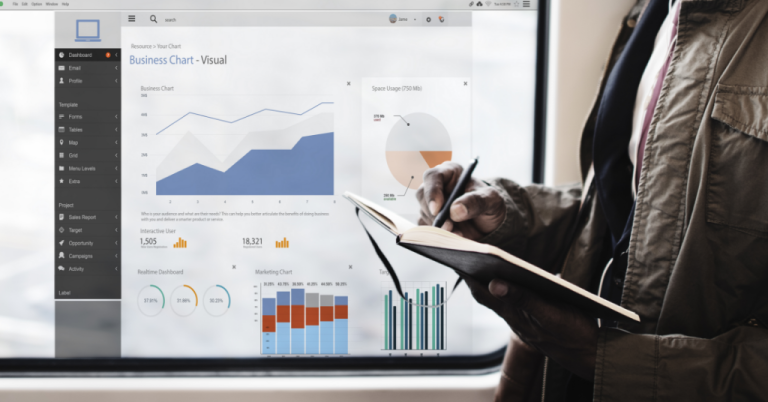
Small Multiples for Segmentation: Using a Grid of Identical Charts to Visualize Trends Across Different Groups
Introduction: Seeing Patterns in a Symphony of Charts
Imagine walking into an orchestra hall. Instead of listening to a single violin, you hear twenty instruments playing the same melody, each adding its own tone, rhythm, and emotional texture. That’s what small multiples do in data visualisation they take one chart, multiply it across categories, and let each variation tell its own version of the story.
In the world of analytics, where comparisons and patterns matter more than absolute numbers, small multiples offer a way to “listen” to each subgroup without losing harmony in the dataset. It’s not just a design technique; it’s a philosophy of fairness in data storytelling giving every category a voice.
The Power of Repetition in Design
Repetition is often seen as boring, but in visualisation, it becomes a powerful tool for comparison. When every chart shares the same scale, layout, and axes, the human brain can effortlessly scan differences in trends rather than fight inconsistencies. It’s like comparing snapshots taken from the same camera angle you instantly notice what’s changing.
Edward Tufte, who coined the term “small multiples,” called them the “visual equivalent of a control experiment.” By holding the structure constant and varying only the data, analysts can isolate what’s truly driving change. For organisations training teams through Data Analytics courses in Delhi NCR, this method is invaluable it teaches how design consistency strengthens analytical rigour.
From One Chart to Many Stories
A single chart tells a story, but a grid of identical charts turns it into a novel. Suppose you’re analysing monthly sales for ten cities. A traditional line chart may show overall performance, but it hides the nuances of how each town behaves.
Now, imagine splitting that chart into 10 small multiples one per city. Suddenly, patterns emerge: a sharp dip in Pune, a steady rise in Hyderabad, a seasonal rhythm in Bangalore. Each subplot becomes a character in your narrative. The beauty is not in the data’s complexity but in its symmetry every subplot mirrors the other, inviting the eye to explore.
This is especially useful when segmenting customers, product categories, or demographic groups. Whether it’s a marketing dashboard or an operations report, small multiples act as magnifying glasses, revealing behavioural differences that would otherwise blur into averages.
Why Small Multiples Beat Overloaded Charts
Overcrowded visuals with multiple lines, colours, and legends often turn insights into confusion. It’s like trying to follow a conversation where everyone speaks at once. Small multiples solve this problem by allowing each variable to communicate independently.
When arranged in a clean grid, they create visual rhythm and cognitive relief. Your eyes can move naturally from one panel to another, comparing slopes, peaks, and patterns. It’s visual segmentation in its purest form no clutter, no noise, just honest storytelling.
Moreover, this method encourages scalability. You can start with two panels and expand to fifty without breaking the structure. It aligns with the principles taught in Data Analytics courses in Delhi NCR, where modular thinking and design discipline are key to effective dashboarding.
Crafting Effective Small Multiples: The Art of Balance
Designing small multiples isn’t about randomly stacking charts. It’s about orchestrating them thoughtfully. The secret lies in consistency fixed axes, identical colour schemes, and a common baseline. This ensures viewers can compare without recalibrating their mental scale each time.
At the same time, context matters. Over-standardisation can kill meaning if one group’s range is vastly different. The designer’s role is to balance comparability and clarity, perhaps by using annotations or subtle colour accents to guide attention.
Interactivity, too, has elevated this concept. Modern BI tools allow users to hover, filter, and focus on particular groups without breaking the grid’s visual logic. Small multiples thus become not just static grids but dynamic storytelling instruments.
Applications Beyond Dashboards
Small multiples shine in diverse domains from finance and healthcare to sports and climate science. In sports analytics, they compare player performance across seasons. In healthcare, they show how treatment outcomes differ among demographics. In marketing, they illustrate campaign engagement by region or segment.
Even social media analytics benefit from this format, visualising engagement patterns by platform or audience type. The strength of small multiples lies in universality any dataset with categorical breakdowns can benefit from them.
Moreover, they foster analytical empathy. Seeing each segment’s journey separately allows decision-makers to appreciate variability instead of forcing a one-size-fits-all interpretation.
Conclusion: A Grid That Speaks in Harmony
Small multiples are not just a clever layout choice they’re a commitment to fairness in visual storytelling. They let every group’s story unfold under equal conditions, helping us see both unity and difference. In an era where dashboards often drown meaning in complexity, small multiples remind us that simplicity, when structured intelligently, reveals more.
Just as an orchestra blends many instruments into one symphony, small multiples bring coherence to segmentation. They don’t just display data they let each piece of it sing, clearly and confidently, in its own charted space.



